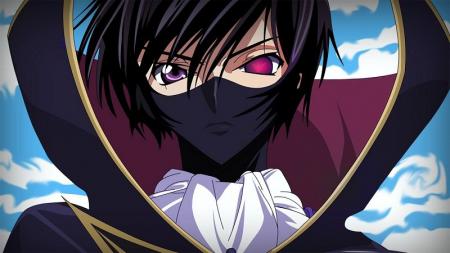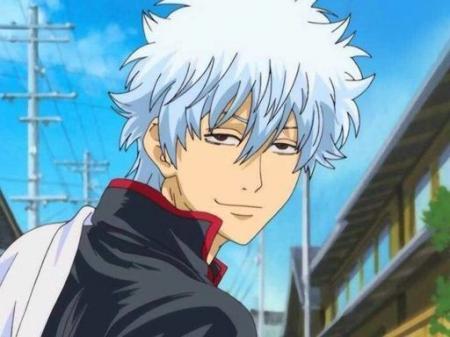Can You Recognize the Names of Anime Characters From Their Pictures? Part 1
The world of anime is a vibrant and captivating universe that has captured the hearts of millions around the globe. With its unique blend of artistic styles, emotional depth, and cultural influences, anime has become a driving force in the world of animation
The characters that populate this realm are as diverse and intricate as the stories they inhabit, making them a crucial element in the global success of anime.
One of the most striking aspects of anime characters is their artistic diversity. Unlike Western animation, which often adheres to specific standardized designs, anime characters showcase various visual styles. From the chibi characters of "Naruto" to the elegant and detailed characters of "Sailor Moon," each anime employs a unique art style that reflects its unique story and themes
This artistic diversity is a testament to the creativity and innovation of anime creators, who are constantly pushing the boundaries of animation to craft visually stunning and memorable characters.
Emotional depth and complexity are also hallmarks of anime characters. Anime explores a spectrum of emotions, from intense joy to profound sorrow, and its characters are not confined to simple stereotypes. Instead, they undergo substantial development, facing internal conflicts and personal growth throughout the storyline. This emotional complexity is a critical factor that resonates with audiences worldwide, fostering a deep connection between viewers and characters
By delving into the complexities of the human experience, anime characters offer a refreshing alternative to the one-dimensional characters often found in Western animation.
Cultural influences also play a significant role in shaping anime characters. Japanese anime draws heavily from the country's rich cultural heritage, which is evident in the portrayal of character archetypes. The honor-bound samurai, the disciplined martial artist, and the diligent schoolgirl are just a few examples of character archetypes deeply rooted in Japanese culture. These archetypes serve as storytelling tools, allowing creators to infuse cultural elements seamlessly into the narrative
By incorporating these cultural influences, anime characters offer a window into the world of Japanese culture, providing viewers with a unique and authentic experience.
Anime also challenges traditional gender roles and stereotypes, presenting a diverse range of characters that break societal norms. Strong, independent female protagonists and sensitive, emotional male characters defy expectations, giving audiences a refreshing perspective on gender dynamics
This departure from conventional norms contributes to anime storytelling's progressive and inclusive nature, making it a powerful medium for exploring complex social issues.
Fantasy and supernatural elements are also prevalent in anime, giving rise to characters with extraordinary abilities and traits. From magical girls with otherworldly powers to mecha pilots saving the world, these fantastical elements contribute to the uniqueness of anime characters. The seamless integration of the supernatural into character narratives adds an element of unpredictability and wonder, keeping viewers engaged and entertained
Moral ambiguity and antiheroes are also common in anime, with characters often having questionable morals or complex pasts. This departure from a black-and-white moral framework allows for nuanced storytelling, encouraging viewers to question conventional notions of good and evil.
By exploring the gray areas of morality, anime characters offer a more sophisticated and nuanced perspective on the human experience.
Iconic character tropes, such as the "tsundere" with a tough exterior and a soft interior, the "shonen" hero on a quest for self-discovery, and the "kawaii" mascot characters, have become synonymous with anime. While appearing in various forms, these tropes contribute to the recognition and popularity of anime characters across different series
By incorporating these familiar tropes, anime creators are able to craft characters that are both unique and relatable, appealing to a wide range of audiences.
Crossover appeal and global recognition are also significant factors in the success of anime characters. Japanese anime characters have achieved remarkable global recognition, transcending cultural boundaries and becoming beloved by fans around the world. The universal themes explored in anime and the relatable and diverse characters contribute to its widespread appeal, making it a powerful medium for cross-cultural communication and understanding
In conclusion, the unique characters of Japanese anime serve as a driving force behind the medium's global success. The artistic diversity, emotional depth, cultural influences, and narrative complexities contribute to the richness of anime characters. As anime continues to captivate audiences worldwide, its distinct characters remain a testament to Japanese animation's creative ingenuity and storytelling prowess. Whether you are a seasoned anime enthusiast or a newcomer to the world of animation, the diverse and compelling characters of Japanese anime are sure to leave a lasting impression.
To find out if you are a true otaku, take this quiz and try to identify the names of anime characters from their pictures!
Example of the test

who is he?

who is he?

who is he?

who is he?

who is he?




